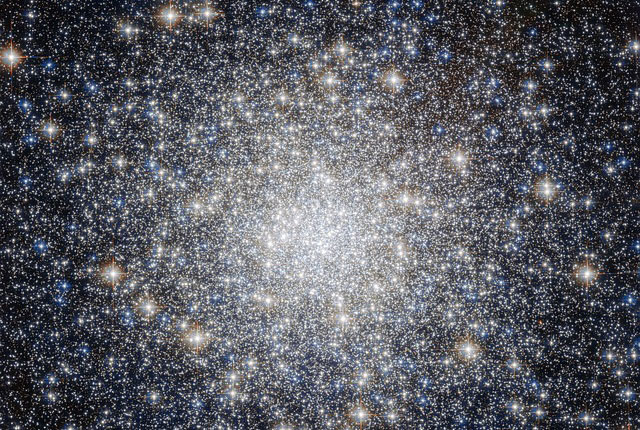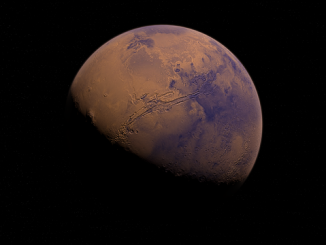
Aside from its three rules — that an object’s speed or how it experiences time will always be measured in relation to something else; that the speed of light will be the same no matter who measures it; and nothing can travel faster than the speed of light — Einstein’s General Theory of Relativity predicted that the mass of stars could be determined by measuring the effect of the star’s gravity on the bending of light. Unfortunately, because stars are so distant, Einstein himself was doubtful that observing such an event could ever be possible.
As Einstein described it, when light from a distant star passes by an object, gravity starts acting like a magnifying lens, brightening and bending the passing light. When the magnifier is massive (like a black hole), the phenomenon is referred to as gravitational lensing. And when the magnifier is a smaller body (such as a star), the phenomenon is called gravitational microlensing. In the case of a star passing directly between the Earth and a background star, gravitational microlensing results in what’s called an ‘Einstein ring’ — a ring of light that’s perfectly circular.
In a stroke of cosmic luck, a total solar eclipse that occurred in 1919 provided the first solid proof that Einstein was right about a star’s effect on light — the measurements taken then proved that the star (in this case, our Sun) creates a ‘curve’ in spacetime, and this curve deflects light passing by.
Nearly a century later, a new study led by Kailash Sahu from the Space Telescope Science Institute just proved that Einstein was wrong, but not in a bad way. The team showed that contrary to what Einstein believed, it was in fact possible to observe gravitational microlensing using a star, other than the Sun, as reference.
Thanks to the superior resolution of the Hubble Space Telescope, Sahu and his team were able to measure the shift in positions of a distant background star as its light was deflected around a nearby white dwarf called Stein 2051 B. Observations were done on 8 occasions within a two-year period, from October 2013 to October 2015. And even though the changes in position were quite minimal, they were enough not just to re-confirm Einstein’s prediction about starlight deflection; it also enabled the team to do something else that couldn’t be done before. They were able to determine the mass of the foreground star Stein 2051 B, which, as it turns out, is nearly two-thirds the mass of our Sun.
As reported by Phys.Org, astronomer Terry Oswalt of Embry-Riddle Aeronautical University pointed out that the findings of Sahu’s team – aside from proving Einstein right and wrong at the same time — are significant for three reasons. First, it solved the mystery about Stein 2051 B’s mass. Second, it confirms astrophysicist Subrahmanyan Chandrasekhar’s theory on the relationship between the mass and radius of white dwarf stars. Third, it provides a new valuable tool for measuring the mass of stars.
The research was recently published in the journal Science.
- Bulenox: Get 45% to 91% OFF ... Use Discount Code: UNO
- Risk Our Money Not Yours | Get 50% to 90% OFF ... Use Discount Code: MMBVBKSM
Disclaimer: This page contains affiliate links. If you choose to make a purchase after clicking a link, we may receive a commission at no additional cost to you. Thank you for your support!




Leave a Reply